BEST TIME TO VISIT NEW ZEALAND – Seasonal highlights of NZ
New Zealand has four distinctive seasons all with their own charm and beauty. With every season the landscape and weather changes, so depending on your personal preferences and the experiences you’re seeking, every season in New Zealand has something new to offer.
In summary the best time to visit New Zealand for hiking is from September until June which are the spring months until late autumn. These months are also the best time to plan your trip to New Zealand if you seek any other outdoor activity such as wine tasting, water sports and other adrenaline filled activities.
The best time for photography in New Zealand really depends what you are looking for to capture. Is it wildflowers and the famous lupins? The snow capped mountains? Southern Lights? Or the vibrant colors of autumn?
In this complete guide you will find an extensive overview of the best time to visit New Zealand. You will find a breakdown per season with all the things you can expect and activities you can do while visiting New Zealand in the different seasons.
Furthermore you will find the answers on questions such as ‘What is the cheapest time to visit New Zealand’ and ‘What is tourist season in New Zealand’. After reading this complete guide on the best time to visit New Zealand you will be ready to plan your unforgettable New Zealand road trip in the season that suits your preferences the most!
Best time to visit New Zealand South Island
Depending on your preferences and the outdoor experiences you’re seeking, the best time to visit the South Island is roughly from September until May. During these months you can do most of the outdoor activities. Keep in mind that New Zealand has diverse landscapes and microclimates. So the temperatures can vary significantly between coastal areas, highlands, and alpine regions.
Spring in New Zealand South Island is a fantastic time to see the snow capped mountains in combination with flourishing nature. Colorful wildflowers, green rolling hills and powerful rivers and waterfalls are a beautiful contrast with the last winter snow on the mountain peaks. With average day time temperatures between 12 and 20 degrees (54°F to 70°F) depending on your elevation, spring is a great time for hiking and outdoor exploring. Spring weather in New Zealand can be changeable though, with a mix of sunny and rainy days. So always bring a rain jacket, especially when you’re going hiking in the mountains.
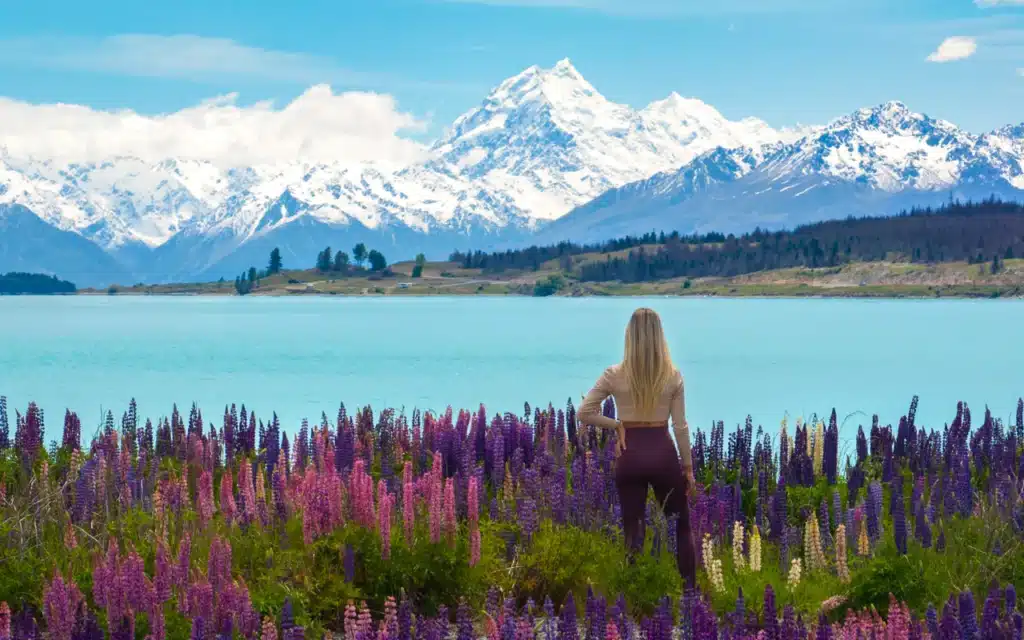
Summer in New Zealand South Island is great for beach days, water sports, hiking and camping. Average daytime temperatures range from around 20°C to 25°C (68°F to 77°F), and with longer daylight hours you will have plenty of time to explore, hike some of the Great Walks in New Zealand and enjoy long summer evenings.
Autumn in New Zealand South Island is a beautiful and vibrant season characterised by mild temperatures, stunning foliage, fewer crowds, cheaper rates and a range of outdoor activities. It is some of the most settled weather of the whole year and typically lasts from March to May. Therefore the New Zealand autumn months are a fantastic time for outdoor activities such as hiking, biking and photography.
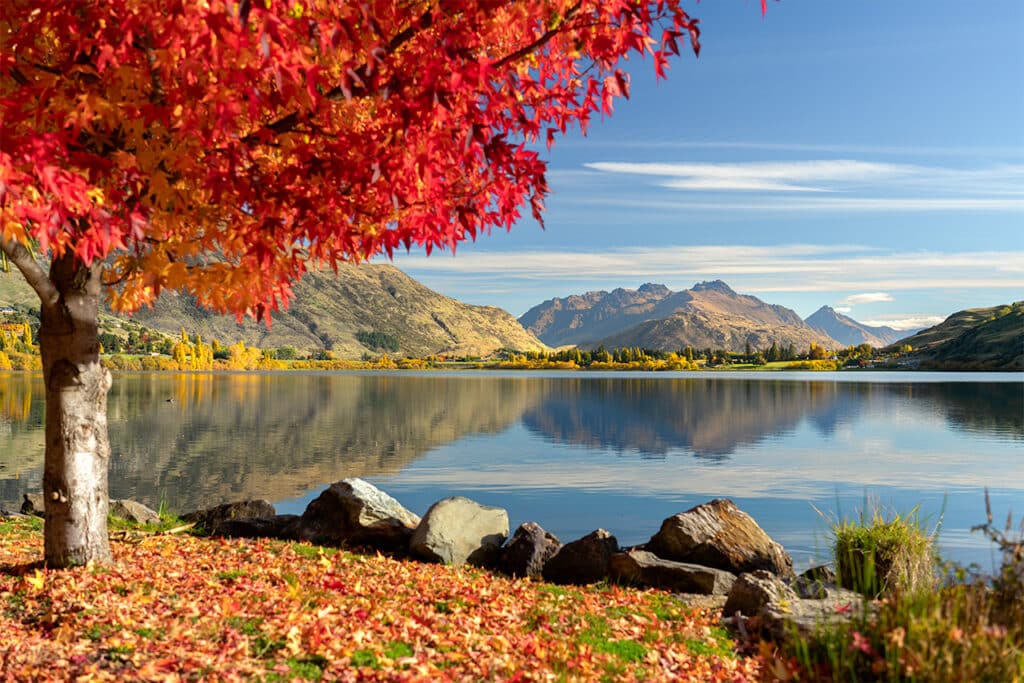
Best time to visit New Zealand North Island
The North Island offers slightly different experiences than the South Island. From vibrant cities to geothermal wonders, stunning coastlines and rich cultural heritage, on New Zealand’s North Island you can get a completely different experience than on the South Island.
Spring in New Zealand North Island is an ideal time to visit botanical gardens, such as the Hamilton Gardens, and wildlife sanctuaries where you can witness birdlife and marine encounters. This season offers comfortable temperatures ranging from 10°C to 20°C (50°F to 68°F) as nature comes to life with blooming flowers and newborn lambs. It’s a great time for outdoor activities like hiking, cycling, and wildlife encounters.
Summer in New Zealand North Island is the peak tourist season in the North Island, with warm temperatures ranging from 20°C to 30°C (68°F to 86°F). It’s an excellent time for outdoor activities, wine tastings, beach visits and exploring the natural beauty. Summer also hosts a range of festivals and events, including New Year’s celebrations, cultural festivals and outdoor concerts.
Autumn in New Zealand North Island brings mild temperatures, ranging from 12°C to 22°C (54°F to 72°F), creating comfortable conditions for exploration. The landscapes showcase vibrant fall foliage, creating picturesque scenery There are also plenty of cultural activities in autumn on the North Island. Attend local festivals or visit the wineries to see the wine harvest which generally takes place between February and April.
Winter in New Zealand North Island is a great time to explore cities, relax in the geothermal wonders of Rotorua and Taupo, visit museums and walk the trails. It’s low season so therefore prices can be much cheaper. Temperatures range from 5°C to 15°C (41°F to 59°F) which is pretty mild compared to the South Island.
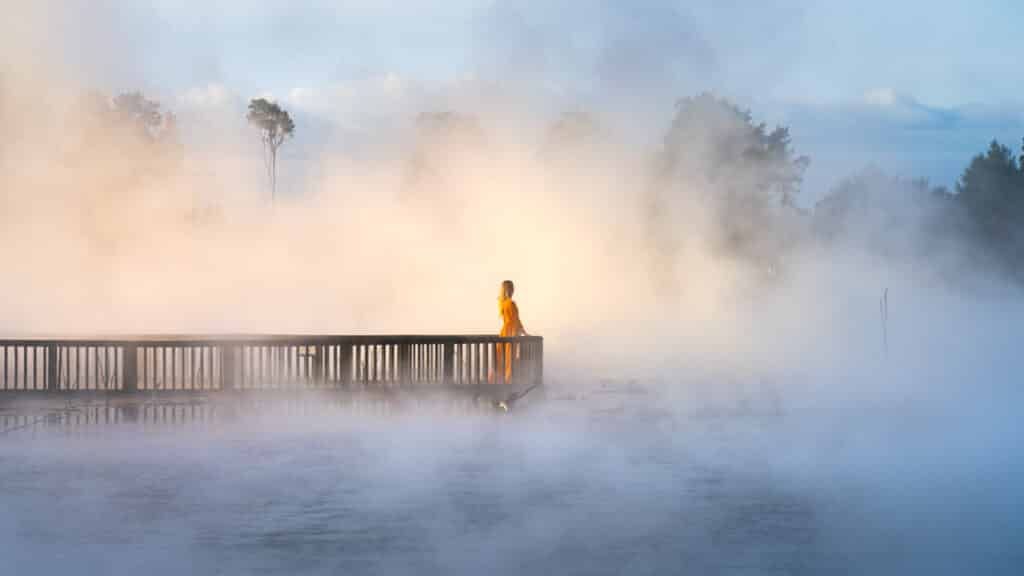
Cheapest time to visit New Zealand
The cheapest time to visit New Zealand is during the winter season, which falls between June and August. This period is considered the off-peak season for tourism, resulting in lower prices for flights, accommodations, and various activities. Prices at resort towns with ski fields will remain high during this period though.
While the weather may be cooler and wetter in the winter months, especially in the South Island, it presents an excellent opportunity for budget travelers to explore New Zealand’s attractions without the crowds. The North Island experiences milder winters, making it a favorable option for those seeking a more affordable trip.
Additionally, winter offers the chance to engage in winter sports like skiing and snowboarding in the scenic Southern Alps. By planning your visit during the winter months, you can make the most of your budget while still enjoying the beauty and adventure that New Zealand has to offer.
Another great option is to travel to New Zealand in the shoulder seasons which are March – May and September – November. During these months at mosts accommodation discounts apply and rental cars and camper vans might be cheaper as well.

Personally we loved to travel New Zealand in September, October and April. Those are also our favorite seasons to visit New Zealand. Spring in New Zealand and Autumn in New Zealand are wonderful months with either colourful wildflowers or colourful autumn trees. Perfect for photography and with mild temperatures and lower rates then high season our personal best recommendation.
What is tourist season in New Zealand?
The tourist season in New Zealand typically aligns with the summer months which last from December to February. This period is considered the peak tourist season due to several factors. Because of the high demand during the tourist season, prices for flights, accommodations, and popular attractions tend to be higher compared to other times of the year. Also, popular tourist destinations may be more crowded during this period.
However, the summer months in New Zealand do have their advantages which are the following things.
- Pleasant weather: New Zealand experiences usually warm and sunny weather during the summer months, making it an ideal time for outdoor activities and exploration. However, the summer of 2023 has been extremely wet and resulted in many floods in New Zealand.
- Longer daylight hours: With extended daylight hours there is more time to enjoy the stunning landscapes, beaches, and outdoor adventures that New Zealand is famous for.
- School holidays: The summer tourist season coincides with school holidays in many countries, leading to an increased number of families and travelers seeking a vacation destination.
- Festivals and events: Numerous cultural festivals, holiday celebrations, and outdoor events take place during this period, adding to the allure of visiting New Zealand.
What months are the hottest in New Zealand?
The New Zealand summer months are the hottest months in New Zealand. This is also peak season and spans from December to February. The exact timing of the hottest temperatures can vary slightly depending on the region within the country.
North Island
- December: The North Island begins to experience warmer temperatures in December, with average daytime temperature ranging from 20°C to 25°C (68°F to 77°F).
- January: January tends to be the hottest month, with average highs ranging from 23°C to 27°C (73°F to 81°F). Some inland areas may experience higher temperatures.
- February: The temperatures remain high in February, with average highs ranging from 22°C to 26°C (72°F to 79°F).
South Island
- December: In December, the South Island starts to warm up, with average daytime temperatures ranging from 18°C to 23°C (64°F to 73°F).
- January: January is typically the hottest month in the South Island, with average highs ranging from 20°C to 25°C (68°F to 77°F). Coastal areas may experience slightly cooler temperatures.
- February: The temperatures remain warm in February, with average highs ranging from 19°C to 24°C (66°F to 75°F).
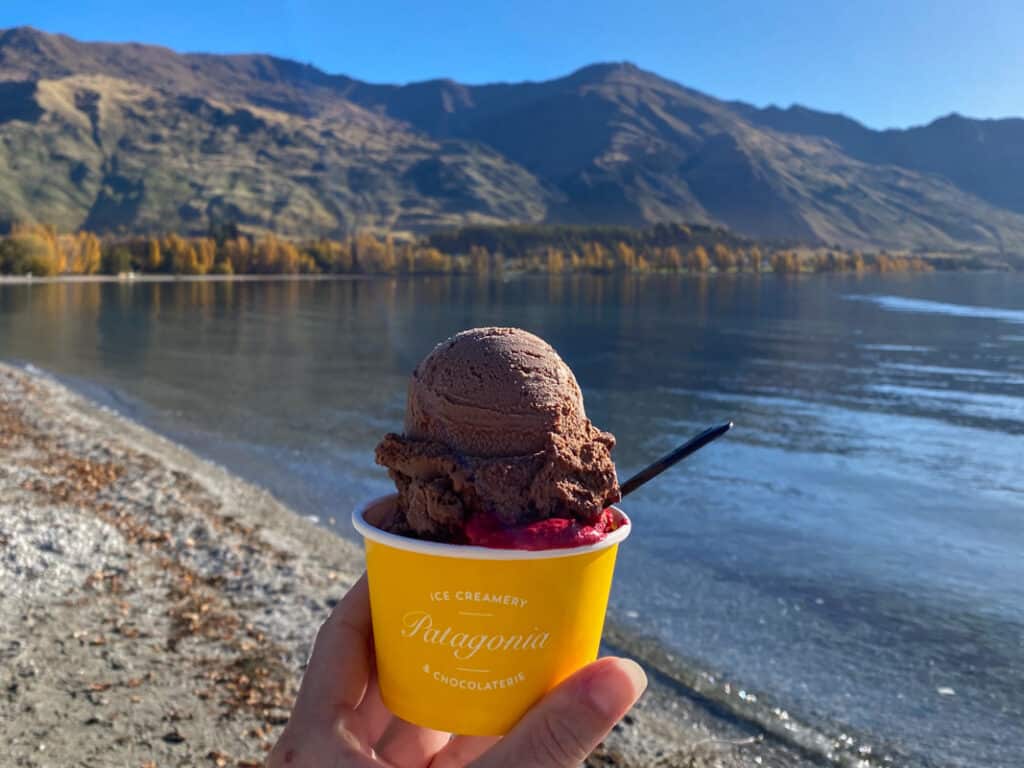
What month is the rainy season in New Zealand?
New Zealand does not have a specific rainy season that applies uniformly to the entire country. The weather patterns and rainfall distribution can vary significantly across different regions and seasons. Especially in the mountainous regions on the South Island rain comes and goes.
Generally, New Zealand experiences a relatively high amount of rainfall throughout the year, with some regional variations. Here’s an overview of the rainfall patterns in different parts of New Zealand:
North Island
- Rainfall is relatively evenly distributed throughout the year, with slightly higher rainfall amounts during the winter months (June to August) and the shoulder seasons of autumn (March to May) and spring (September to November).
- The eastern coastal areas of the North Island tend to be drier compared to the western and northern regions.
South Island
- The western coast of the South Island, including areas such as Fiordland and the West Coast, receives the highest rainfall in the country, often experiencing rainfall throughout the year.
- The eastern coast of the South Island, including regions like Marlborough and Canterbury, tends to be drier with lower rainfall amounts.
It’s important to note that weather patterns can vary from year to year, and unexpected rain showers can occur even during the typically drier months. It’s advisable to check the local weather forecast and pack appropriate rain gear regardless of the time of year you plan to visit.
If you prefer to avoid excessive rainfall, visiting during the summer months (December to February) generally offers a higher chance of better weather and fewer rain showers. However, the weather in New Zealand can be unpredictable, and having some flexibility in your plans is always beneficial.
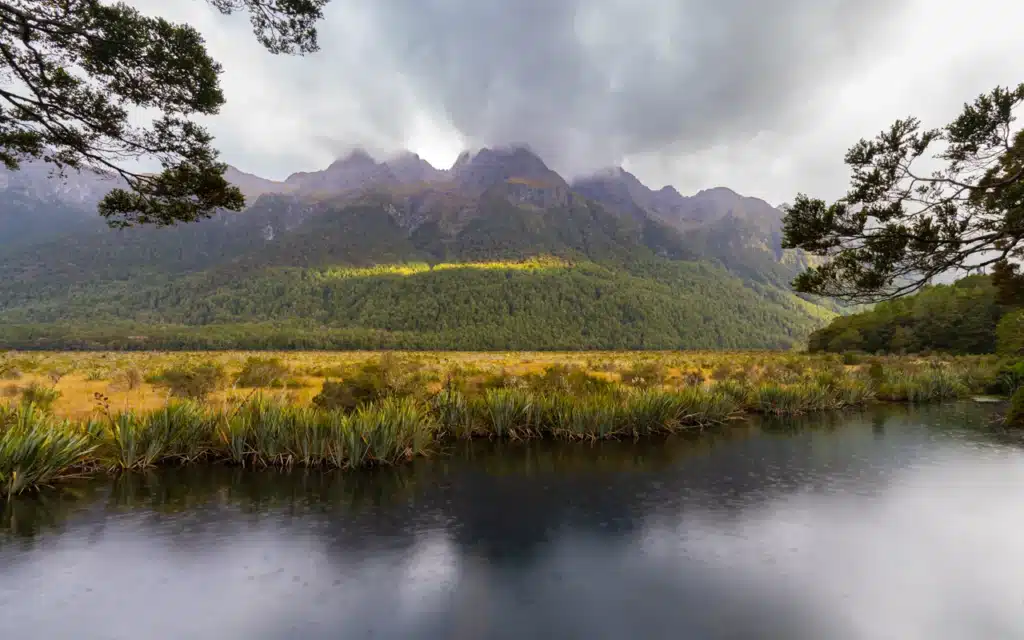
What is the best time for hiking in New Zealand?
The best time for hiking in New Zealand is generally from spring until autumn which is September until April, May. It depends which trails you want to explore and if you want to do the multi-day hikes or shorter day walks.
If you have alpine experience and know how to navigate through snow, then you also can hike during winter in New Zealand. Just make sure to follow the DOC website for avalanche danger reports and rent or buy crampons and an ice axe.
For day hikes either spring, summer and autumn are perfect. All seasons offer something different with the ever changing landscape. From the flourishing nature in spring to the warm and long summer days or the vibrant colors of autumn. Rain can fall in every season and is something you have to be prepared for.
If you are planning to do the Great Walks in New Zealand than the summer season (December to February) are generally your best option when the weather is more favorable and the daylight hours are longer. However, even in summer there can be rainy days which can really impact your multi day hike.

What is the best time for landscape photography in New Zealand?
New Zealand is a paradise for photographer with its diverse landscape and atmospheric conditions. The best time to visit New Zealand for landscape photography largely depends on what you seek to capture. But here are some considerations for the best time for landscape photography in New Zealand.
- Spring is for blooming wildflowers, lush greenery and powerful rivers and waterfalls
Spring (September to November) brings rainfall and melting snow, resulting in higher water flows in rivers and cascading waterfalls. This creates opportunities to capture the dynamic movement of water, adding a sense of drama and energy to your images. It’s also the time of the blooming wildflowers such as lupins and Mt Cook Buttercup.

- Summer provides long days and vibrant colors
The summer season (December to February) brings out the vibrant colors of New Zealand’s landscapes. From lush greenery to colorful flowers and foliage, you’ll find a rich palette to incorporate into your photographs.
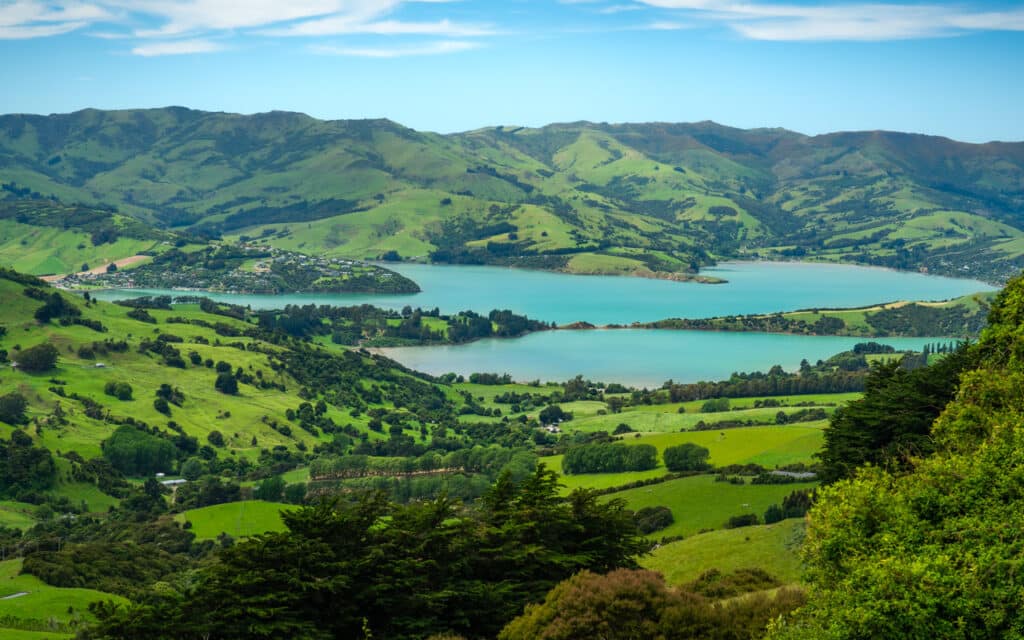
- Autumn brings vibrant fall foliage for a picturesque setting
Autumn (March to May) brings vibrant fall foliage, creating a picturesque setting. This season is ideal for capturing landscapes adorned with stunning red, orange, and golden hues.
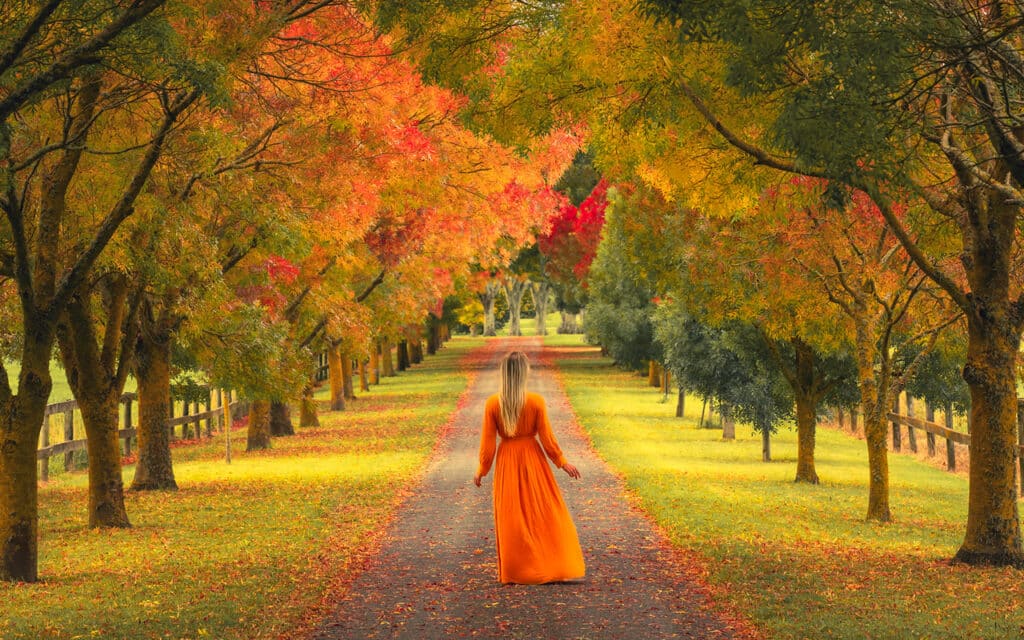

- Winter provides dramatic weather with snow-capped mountains
Winter (June to August) is for the die hard photographers that want to chase storms, dramatic landscapes with snow-capped mountains, frozen lakes, and moody skies. It’s also a great time for astrophotography, as the clear nights allow for capturing the starry skies.
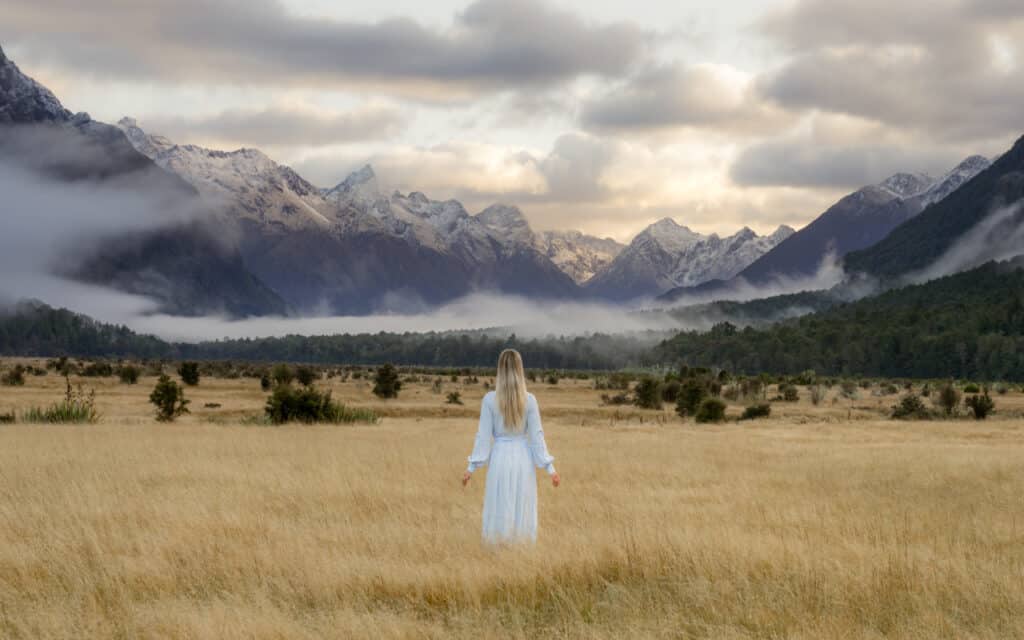
What is the best time to ski in New Zealand?
Ski fields in New Zealand typically open from late June or early July, depending on the snowfall and ski field preparations. The ski season in New Zealand generally runs through August and sometimes extends into September, depending on snow conditions and the demand for skiing.
The ski fields in New Zealand receive snowfall during the winter months, particularly in the South Island’s Southern Alps. The snow conditions can vary from year to year, so it’s recommended to check the snow reports and conditions closer to your planned visit.
The South Island offers several renowned ski fields, including Coronet Peak and The Remarkables near Queenstown, Cardrona and Treble Cone near Wanaka, and Mt Hutt near Christchurch. These ski fields offer a variety of terrain, facilities, and services for skiers and snowboarders of different skill levels.
The North Island has two ski fields, Whakapapa and Turoa, located on the slopes of Mt Ruapehu in Tongariro National Park. These ski fields offer a unique opportunity to ski on an active volcano and are accessible for day trips from major cities like Auckland and Wellington.
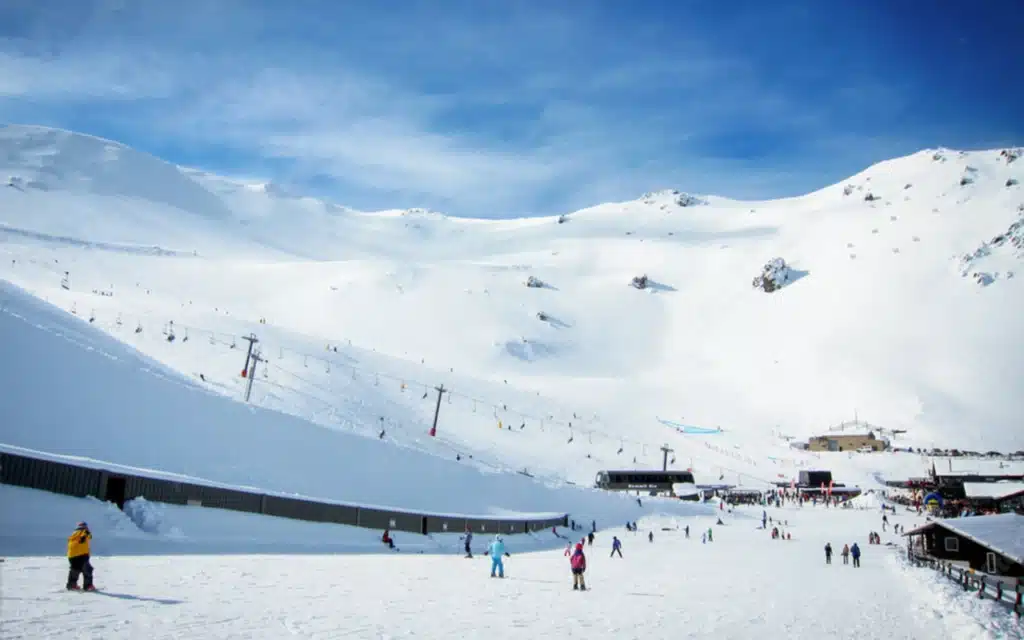
How to get around in New Zealand
To experience New Zealand to the fullest and at your own pace, renting a car, campervan or motorhome is the best way to get around. Which one of these options you choose depends on your preference and budget. If you love camping, being outdoors all day and you don’t mind a smaller living space, then renting a camper van is the way to go. It also gives you the freedom to sleep at some of the most beautiful camping spots, but for some of them you’ll have to make a reservation and plan your trip accordingly. The same goes for a motorhome which is bigger than a campervan and fits about 4-6 people. Here’s what you need to know about renting a car, camper van or motorhome in New Zealand.
Car rental New Zealand
Renting a car in New Zealand is the easiest and cheapest rental vehicle available. It will get you to all the best destinations with ease and gives you the freedom to stop for a break wherever you want. However, you should keep in mind that some roads in New Zealand are still gravel or that you have to cross shallow rivers to some destinations in National Parks. Therefore we personally recommend a mini SUV or SUV model to have enough clearance for these kind of roads. We rented for 6 weeks a Mitsubishi ASX model and were super happy with this car!
The best place to book your rental car in New Zealand is on Discover Cars where you can compare different car models, prices, companies and terms and conditions. You can also check Rental Cars to compare at which platform you can get the best deal. Make sure to secure the booking of your rental car as soon as possible to have the lowest price possible. Prices go up the closer you get to the pick up date.

Campervan rental in New Zealand
Traveling around in a campervan is one of the most popular ways for a roadtrip in New Zealand. With a bed, small kitchen and seating area you will have all the (basic) needs on four wheels. Make sure to check if your campervan has a shower or not because this might influence where you want to camp. A campervan allows you to camp at plenty of beautiful places, sometimes for free, sometimes for a fee. It will you give you a true feeling of freedom and connects you with nature.
We personally recommend to book your campervan with Travellers Autobarn as they have a wide range of Stationwagons, 2-berth campervans & 3-5 berth campervans to hire for all budgets. All Travellers Autobarn campervan hires in New Zealand come with free unlimited kilometers, 10% discount to premium campgrounds, 24/7 road side assistance & long term rental discounts. Check the availability and prices today to secure your campervan for a New Zealand dream roadtrip!
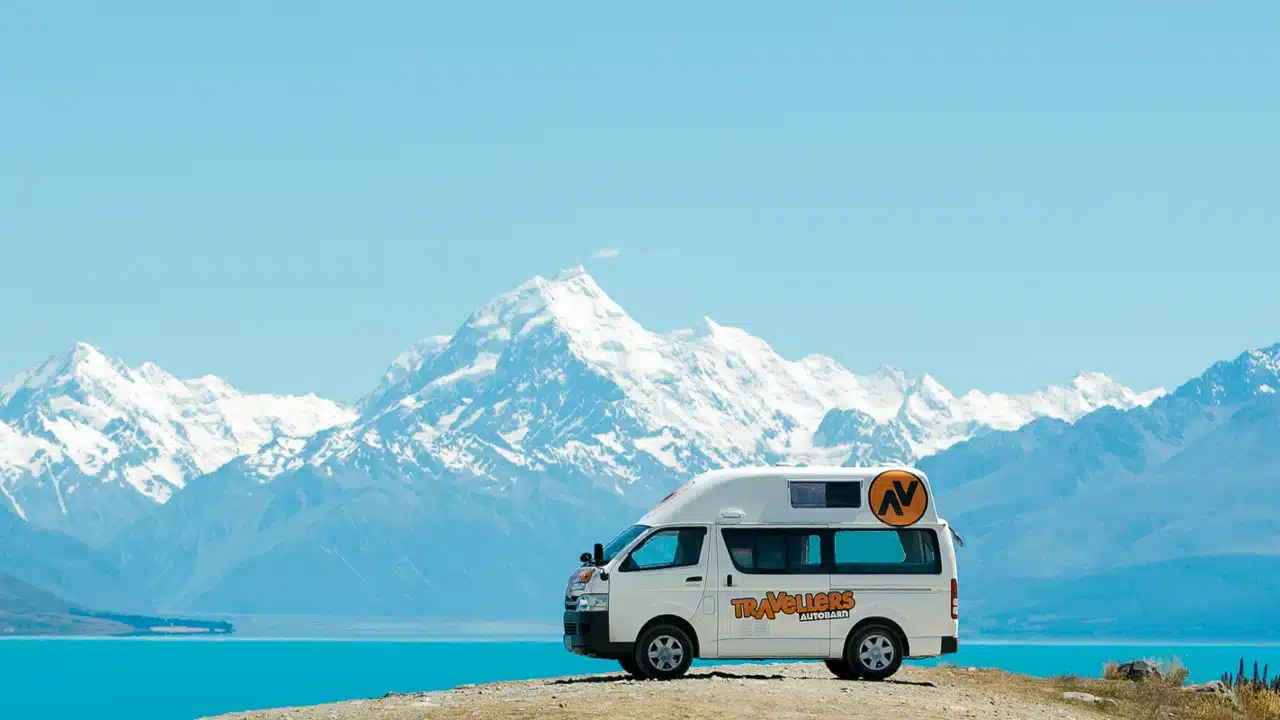
More New Zealand travel guides
I hope you enjoyed this complete guide about the best time to visit New Zealand. And of course that it will help you to make the best choice of planning your trip to New Zealand in the right season. Make sure to check our other New Zealand guides to plan your ultimate trip!
South Island New Zealand guides
35 best photo spots on the South Island New Zealand – The Ultimate Guide
30 best New Zealand waterfalls – The Ultimate Guide
20 best hikes on South Island New Zealand – The Ultimate Guide
Queenstown
30 best things to do in Queenstown – The Ultimate Guide
16 best hikes in Queenstown – The Ultimate Guide
22 best photo spots in Queenstown – The Ultimate Guide
20 best restaurants in Queenstown – The Complete Guide
Queenstown Hill walk – The Complete Guide
Ben Lomond track – The Complete Guide
Moke Lake loop track & viewpoint – The Complete Guide
Bobs Cove nature walk – The Complete Guide
Wanaka
22 best things to do in Wanaka – The Ultimate Guide
15 best walks in Wanaka – The Complete Guide
Where to stay in Wanaka – The Complete Guide
15 best restaurants in Wanaka – The Complete Guide
Mount Cook National Park
20 best things to do in Mount Cook National Park
12 best Mt Cook walks – The Ultimate Guide
10 best Mount Cook accommodations to book
Best Mount Cook helicopter tours to book
Hooker Valley track – The Complete Guide
Sealy Tarns track – The Complete Guide
Tasman Glacier viewpoint – The Complete Guide
Mueller Hut Track – All You Need to Know
Glenorchy
20 best things to do in Glenorchy – The Ultimate Guide
Glenorchy walkway & lagoon track – The Complete Guide
Earnslaw Burn glacier valley and waterfalls – The Complete Guide
Fiordland National Park
20 best things to do in Milford Sound – The Ultimate Guide
6 best Milford Sound helicopter tours
Lake Marian Track – The Complete Guide
Milford Sound Cruise – The Complete Guide
Key Summit track – The Complete Guide
Franz Josef Glacier Country
Best Franz Josef heli hike tours – All You Need to Know
15 best walks in Franz Josef – The Ultimate Guide
Lake Matheson walk – The Complete Guide
Franz Josef Glacier walk – The Complete Guide
Roberts Point Track – All You Need to Know
Fox Glacier Walk & Walking on Fox Glacier Guide
Hokitika Gorge walk – The Complete Guide
North Island New Zealand guides
20 best photo spots on North Island New Zealand
25 best things to do in Rotorua – The Ultimate Guide
15 best things to do in Taupo – The Ultimate Guide
Best things to do in New Plymouth Taranaki – The Ultimate Guide
12 best things to do in Hawkes Bay – The Ultimate Guide
Best things to do in Whangarei – The Ultimate Guide


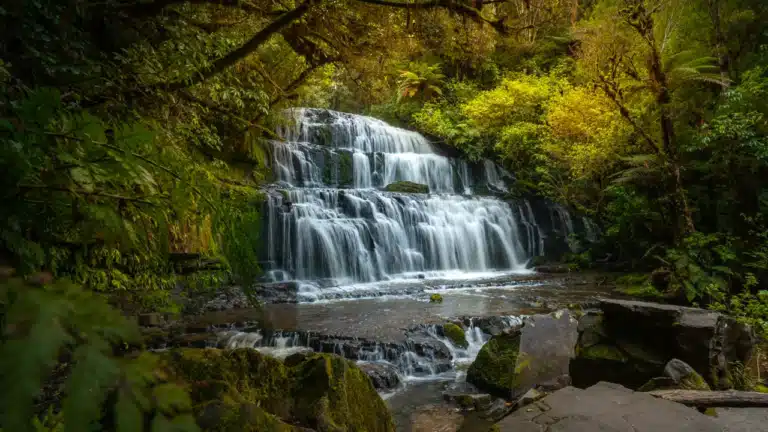
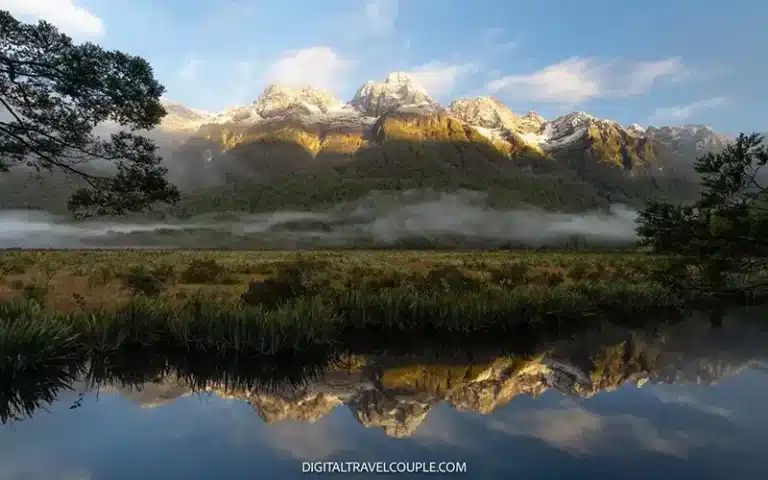
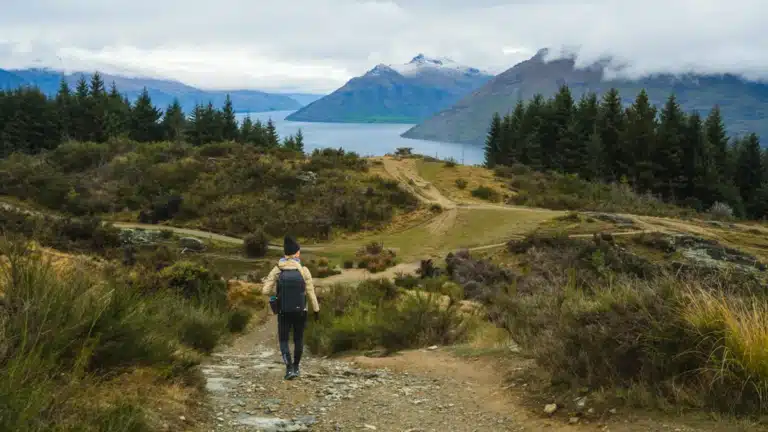

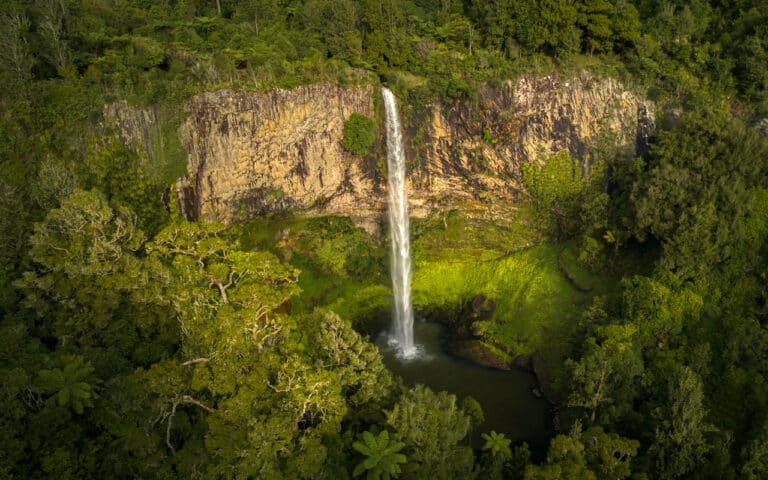

This post may contain affiliate links
We hope this guide will help you plan your travels! If you consider booking your accommodation, tours or rental car via our affiliate links, you support this blog because we earn a small commission at no additional cost to you!